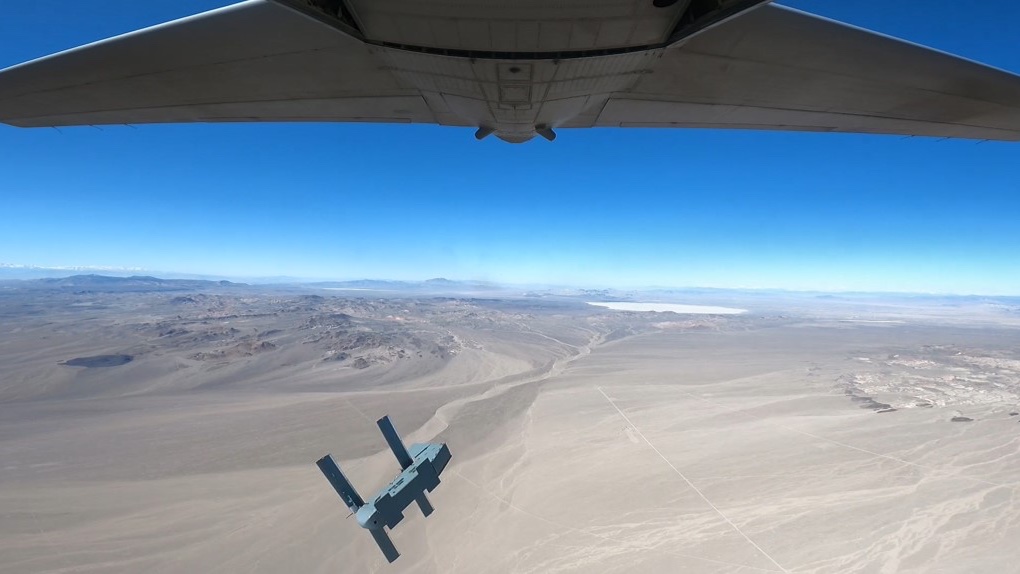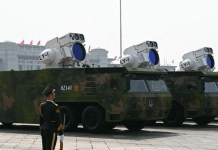The US Air Force has ordered 15 cargo glider drones to provide support to its ground troops. US company Silent Arrow will develop these drones.
The company stated on November 29 that it will scale down its 1-ton cargo delivery drone to meet the Air Force order for 15 smaller UAVs, which will be reconfigured and renamed as Silent Arrow Precision Guided Bundle, or SA-PGB.
The Precision Guided Bundle UAV will be able to take off from aircraft side doors and cargo ramps. According to the company, aircraft as light as Cessna Caravan turboprops and as huge as Boeing C-17 strategic airlifter, will be able to deploy these drones.
On November 12, the Air Force Research Laboratory (ARFL) awarded the firm a Small Business Innovation Research Phase 2 contract. The goal is to develop a vehicle that can operate at high altitudes.

The autonomous unmanned air vehicles (UAVs) will be developed in Silent Arrow’s Irvine facility and will be ready next year for operational testing at the Pendleton UAS Test Range in Oregon, according to the company.
The SA-PGB will have a maximum weight of 500 pounds, a cargo capacity of 350 pounds, a length of 39 inches, and the ability to deploy from high altitudes and speeds.
Under a #PhaseII #SBIR, Silent Arrow’s Precision Guided Bundle will be developed as an #autonomous #cargoglider for the #Warfighterhttps://t.co/jEFl6TbZNH#AFWERX #AFRL #UAS #SilentArrow #USAF #Cargo #Drone #UAV #socom #warfighter #militaryaviation #DisasterRelief #glider
— Air Force SBIR/STTR (@AF_SBIR_STTR) November 30, 2021
Spring-loaded wings will be used on the cargo gliders, which can be folded for storage and deployed for flight. These drones are said to be less expensive than the US Army’s Joint Precision Airdrop System, a GPS-guided cargo delivery parachute system.
Precision Guided Bundles will also have swarming capabilities, according to Silent Arrow, implying that the UAVs would be able to share sensor data and collaborate to select landing zones.
“We’re looking forward to an exciting flight test program in 2022 and getting this new capability into the hands of warfighters and disaster relief groups alike,” said Chip Yates, founder and CEO of Silent Arrow.
Silent Arrow GD-2000
Yates Electrospace Corporation conceptualized and built the Silent Arrow cargo delivery drone (YEC). In September 2019, it was unveiled at the Defense & Security Equipment International (DSEI) show in London.
A modified commercial-off-the-shelf (COTS) Pixhawk Cube autopilot system is installed on the Silent Arrow cargo delivery drone. It also has a GPS, a magnetometer, a barometer, an inertial measurement unit (IMU), and a light detection and ranging (LiDAR) device.

The Silent Arrow GD-2000 is a rectangular box with an aluminum frame and birch plywood panels that measures two feet by two feet by eight feet. A nose cone with an autopilot is mounted on the front of the plane before takeoff, while a twin-tail is attached to the back.
The drone can fly up to 40 miles with a 1,600-pound cargo due to two wings on each side that are staggered in a semi-biplane form. The unmanned aerial system (UAS) pursues a pre-programmed flight plan to a designated landing zone independently.
It flies there practically undetected, with no radar signal and no datalinks to intercept or disrupt. Besides, the box’s payload can be easily retrieved, and it can be abandoned or repurposed after the landing.
In 2017, the US military was looking for non-parachute ways to carry supplies and crucial tactical gear, and these attributes grabbed their attention. To test the glider in limited airspace, the Air Force provided C-130 aircraft and crews.
The US Air Force was able to assess its capability by releasing it out from the back cargo door of the Hercules at 25,000 feet, witnessing its wings spring out in less than a second and then monitoring the payload-laden UAS to glide to its designated point.
The Marine Corps Warfighting Laboratory funded the development of six GD-2000s for testing purposes.
The company said that the idea is to provide one squad of special operators with one day’s worth of kit. This would possibly include everything a special operator would carry in a backpack, including guns, communications devices, apparel, food, and even money.
Fuel, special sensors, ammo, weapons systems, or equipment may also be delivered by a Silent Arrow drone.
- Contact the author at ashishmichel@gmail.com
- Follow EurAsian Times on Google News




